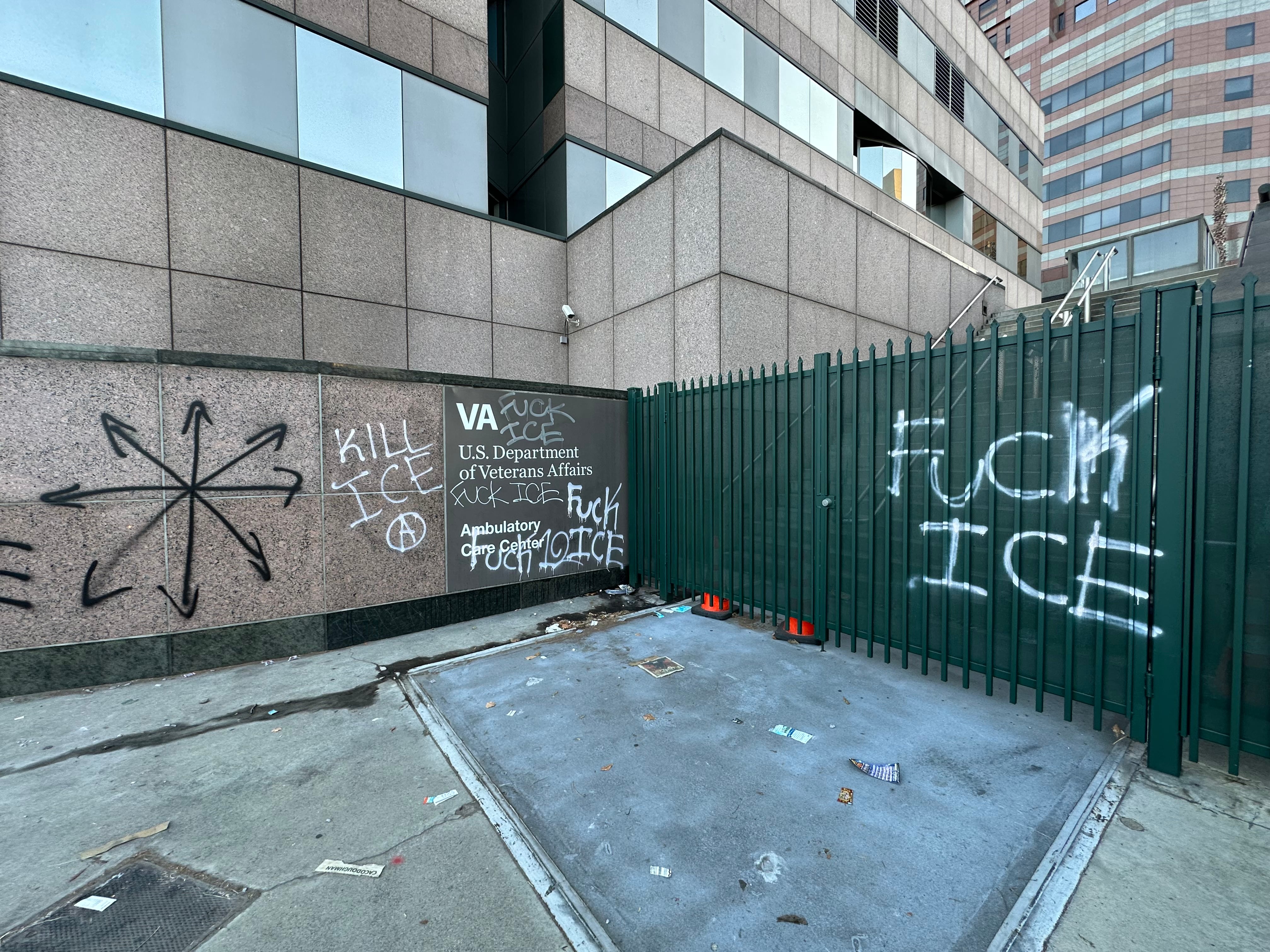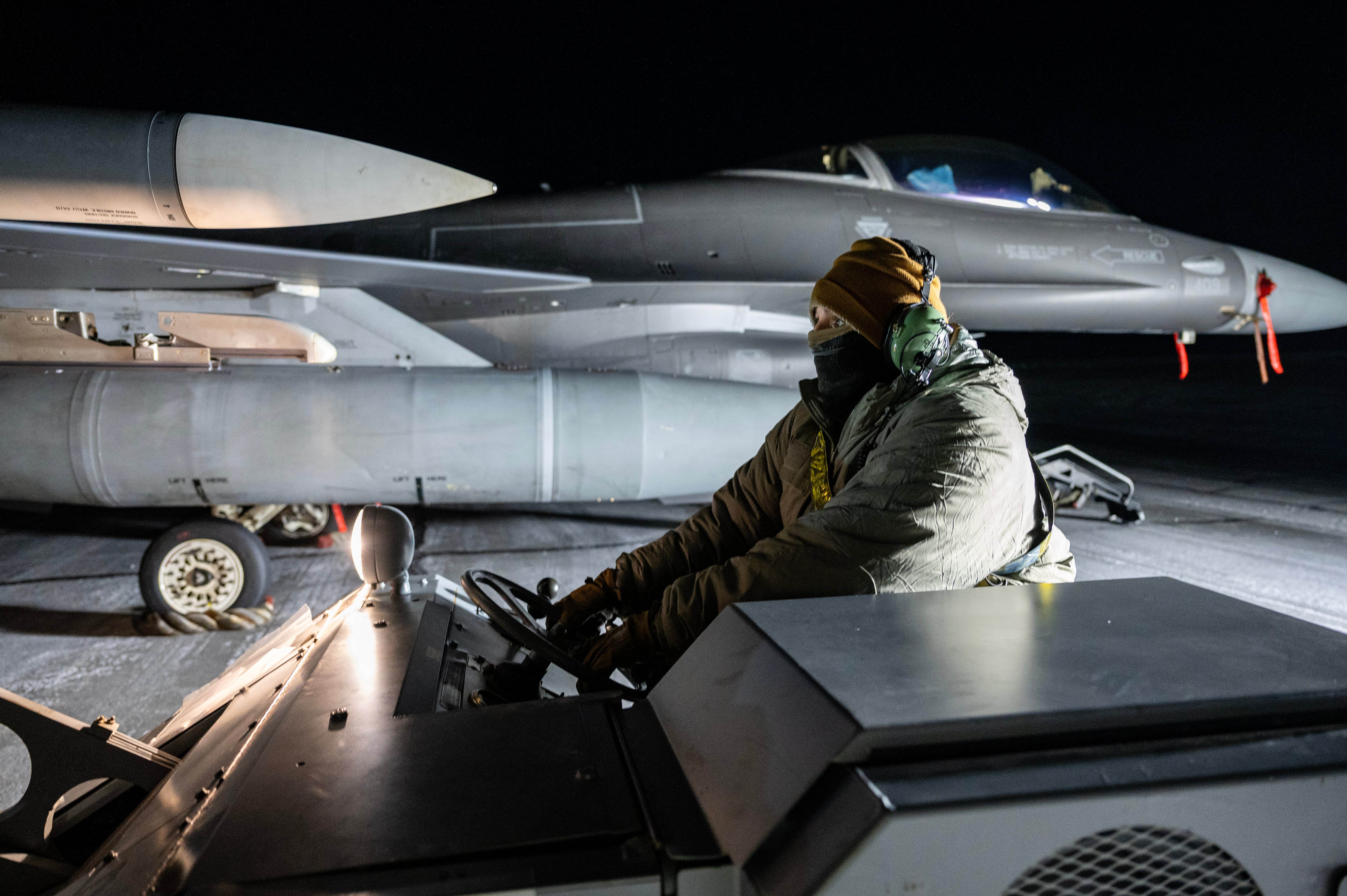Drawing on his training from the Marine Corps, Nick Koahou ran toward the gunfire when two terrorists in San Bernardino, California, tried to kill police after shooting dozens of people at a work holiday party.
Police believe that Syed Farook and his wife Tashfeen Malik killed massacred 14 people and injured more 17 others in a Dec. 2 terror attack apparently inspired by radical Islam.
Koahou, a narcotics officer with the San Bernardino Police Department, was there when Farook and Malik opened fire on police who had been trailing their SUV. Prior to becoming a police officer, Koahou served in the Marines from 2004 to 2007 as a military police officer and later as a security for the president's helicopter squadron, Marine Helicopter Squadron One presidential support specialist guard, according to his DD-214.
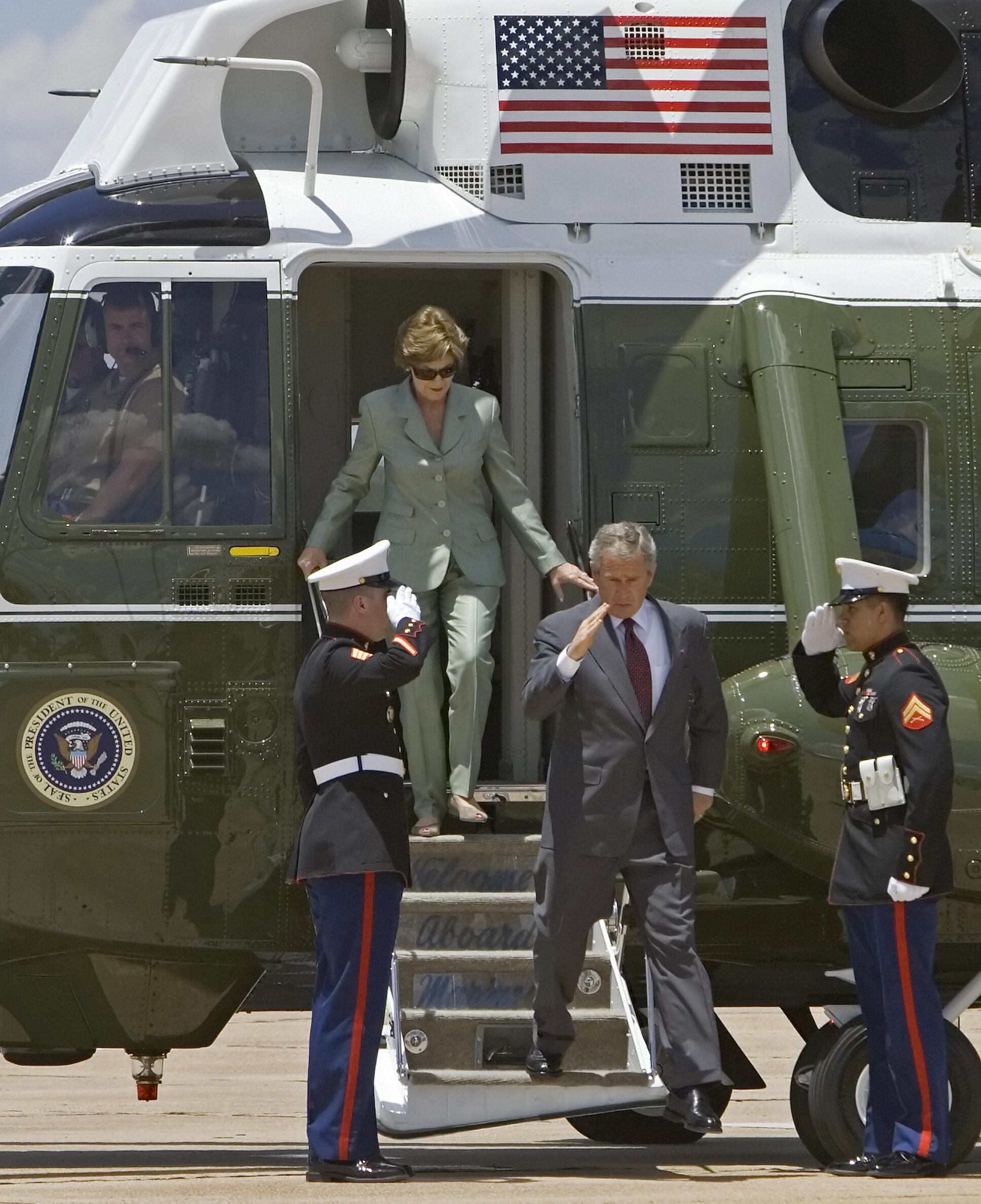
Veteran Marine Cpl. Nick Koahou, bottom right, is seen in this 2006 photo as President George W. Bush and his wife Laura step off Marine One.
Photo Credit: Paul J. Richards/AFP/Getty Images
As soon as the shootout with the police began ing started, Koahou saw that a sheriff’s deputy was far too close to the couple's SUV. The deputy was trying to use his car for cover, but Farook was armed with an AR-15 rifle, which could punch through the deputy’s body armor.
"As soon as the first shots were being fired at us, I saw that deputy up there and I broke away from where the other officers were and drove into the westbound lane because I knew I needed to get a better shooting angle," Koahou told Marine Corps Times on Wednesday. "I knew I needed to get up and get that guy back to some cover because he was completely exposed and wasn’t going to last long the way the fire was coming towards us."
When Farook got out of the couple’s SUV and started to flank the deputy, Koahou, armed with his own AR-15, said he counter-attacked., armed with his own AR-15, said Koahou, who The former corporal then began using the fire team rushing tactics he had learned in the Marines to move forward under fire.
"At MP school, we practiced getting ambushed," he said. "You [exit]exfil from the other side, you get on line, and you move forward, and you put so much firepower on them that they give up — it breaks their will."
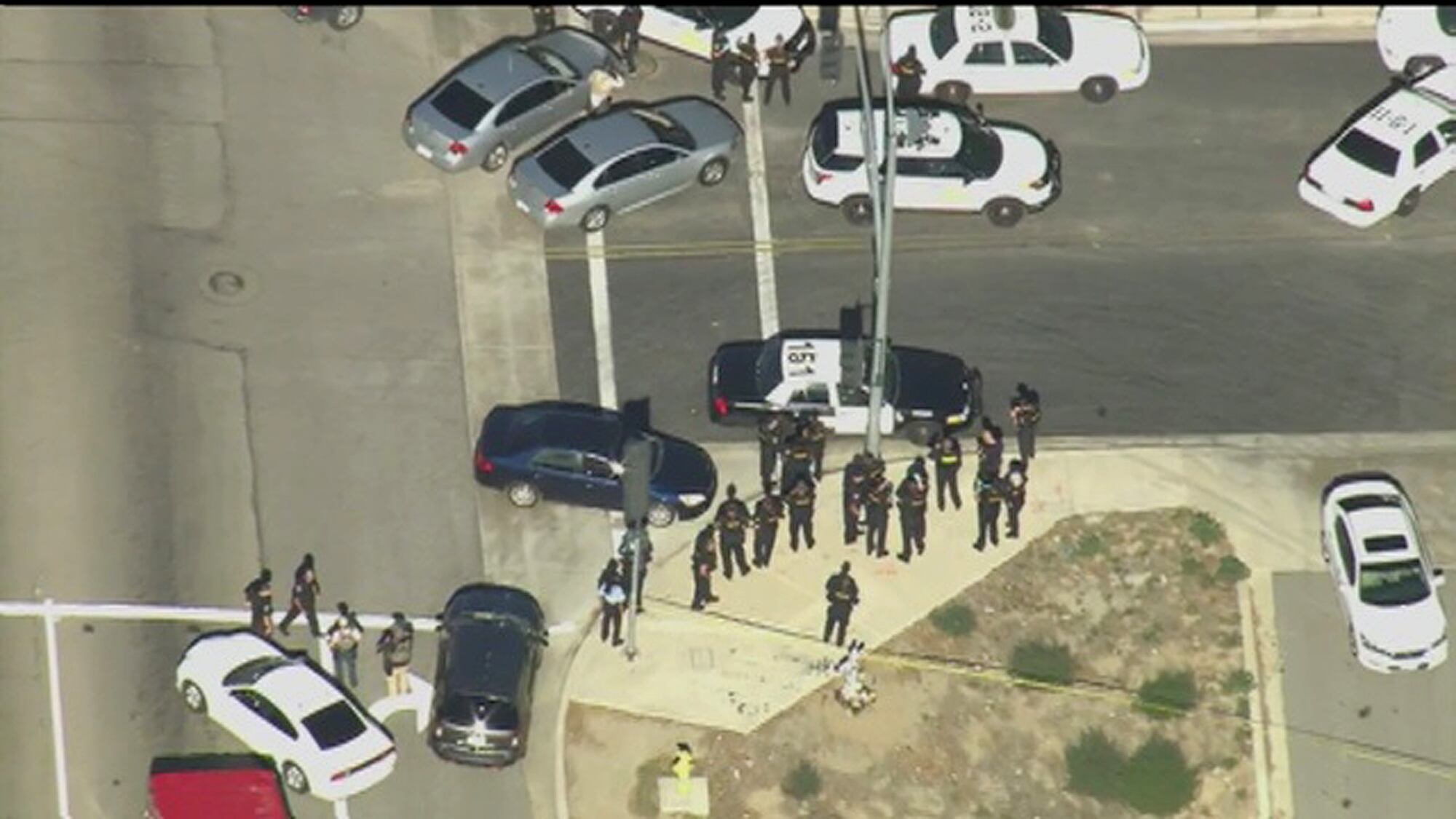
First responders gather outside a Southern California social services center in San Bernardino, Calif., after a shooting on Dec. 2.
Photo Credit: KTTV via AP
While running towards the deputy, Koahou said he screamed at him to stay down so he could have a clear shot at Farook, he said. As soon as Koahou reached a position where the deputy wasn’t between him and Farook, he dropped to the ground and opened fire.
"The first volley, I saw him start to stumble and he fell down," Koahou said. "Then he sat up and I started engaging the right side of his body. I saw him just fall backwards and he was laying on the ground. Then I saw his legs start moving around, like he was going to try to get up, so I started shooting him in the thighs to keep him down."
While he can’t say whether his shots were the ones that killed Farook, Koahou has no doubt that they his shots hit their mark.
"I know my rounds were effective," he Koahou said.
Even though Farook was down, the sheriff's deputy was still in danger. Malik was still firing at police from the SUV, so Koahou ran toward a corner with some cover so he could lay some covering fire to allow the deputy to move to safety.
That's when he was hit in the left thigh.
"That felt like someone punched me as hard as they could in my thigh," Koahou said. "It kind of took my leg out from underneath me. I stumbled and fell into the corner."
As a Marine, Koahou knew what an AR-15 round does to the human body. He was initially afraid that the round had torn his femoral artery, but after wiggling his toes, moving his foot and failing to find an exit wound, he figured his injury was not life-threatening.
Even though he was in pain, Koahou said he was determined to stay in the fight. He kept firing at the SUV while yelling at the deputy to stay down.
"Just like the military, in police work, when they hear ‘officer down,’ people start operating out of emotion and I really didn’t want people to see me laying there hurt," he said. "I wanted to get back up as quick as I could because I wanted to kill these bad guys. But I also didn’t want [any officers] them doing something out of emotion where they were going to get hurt trying to come up to me."
About this time, another sheriff's deputy ran to Koahou's side and applied a dressing to his wound. Koahou got to his feet and saw that he could put pressure on his left leg. A police car drove up to the two of them and Koahou was put in the back seat.
"I started to sit down; [then] I said, 'You know what, I can still hear gunfire coming out of the back of that car,'" Koahou said. "I told them to get out of the way and I was still fighting. I got back up and I got to the back of that unit [police car] and I told them, 'We need to go get the deputy.'"
Koahou and other officers used the police car as a shield as they walked toward the sheriff's deputy, all the while shooting at the SUV. They made it to the sheriff's deputy and successfully brought him to safety.
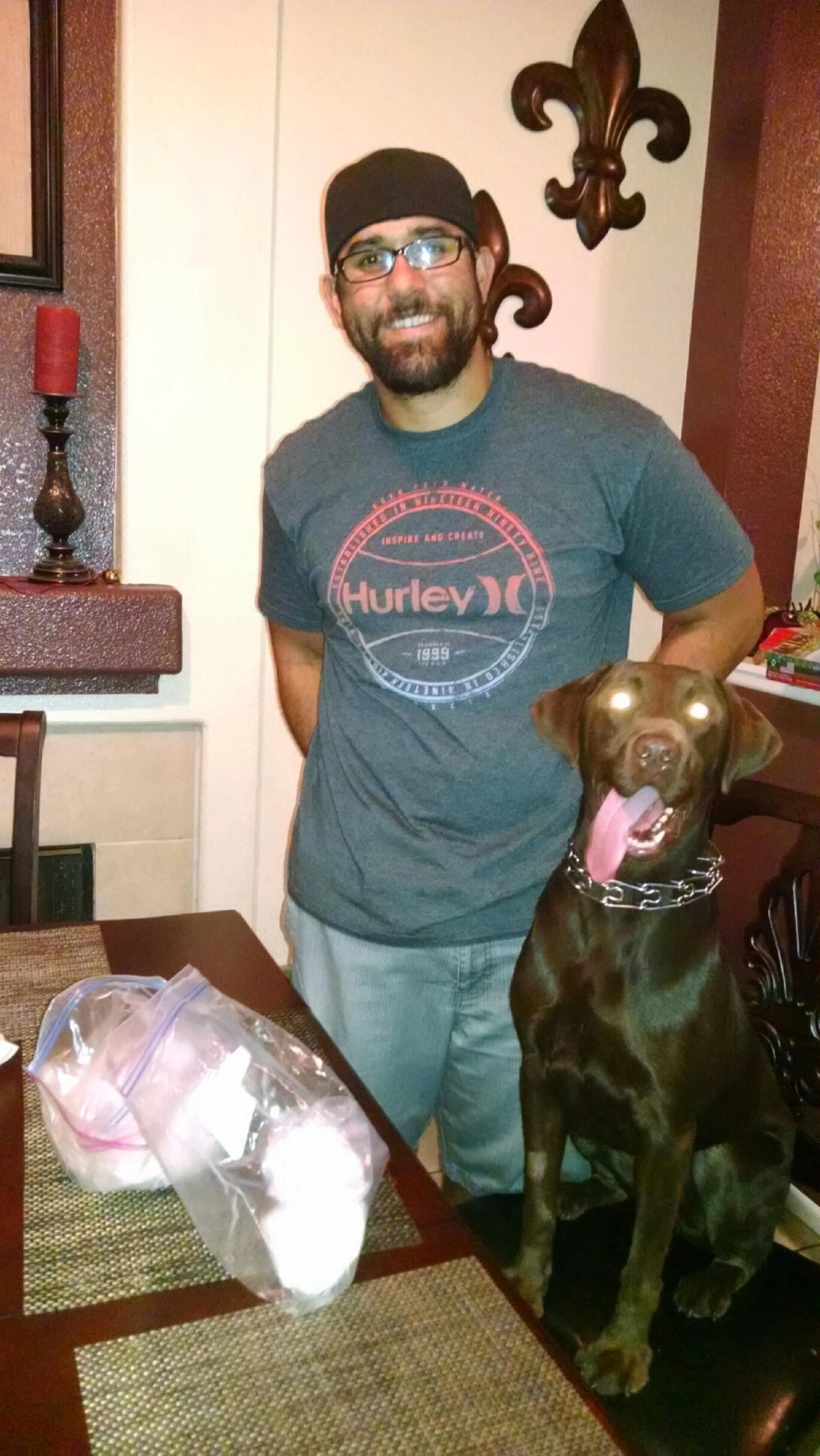
Nick Koahou, a Marine veteran, said his military training helped him take down a terrorist in San Bernardino, Calif., in December.
Photo Credit: Courtesy Nick Koahou
The training Koahou received in the Marine Corps gave him an edge over the two terrorists in the shootout, said police Lt. Rich Lawhead, head of the San Bernardino police department's narcotics unit. Most police officers are not taught to advance while under fire, said Lawhead, a fellow Marine veteran.
"It’s not something you get in police training unless you’re on SWAT team or an entry team," Lawhead told Marine Corps Times. "It’s not something that we ... basically teach in the academy"
The Marine Corps also teaches how to be aware of your surroundings while moving under forward into fire, Lawhead said.
"You don't get that in law enforcement," he said. "We don't teach all that sensory stuff going on around you while you're still concentrating on the fight."
plans to
"He will not only be honored by the department but he's been honored by several other groups already," Lawhead said.
When asked what kept him going after he was hit, Koahou said he has a strong will to stay alive — and stay in the fight.
"I'm not just going to go out on my back," Koahou said. "If I'm going to die, I'm going to go out fighting."
Jeff Schogol covers Marine Corps leadership, gender integration, aviation, and Pacific-based Marines for Marine Corps Times. He can be reached at jschogol@marinecorpstimes.com.


